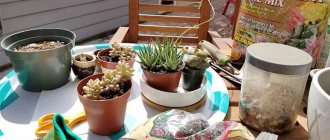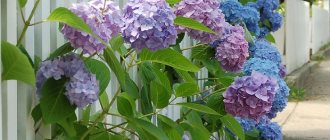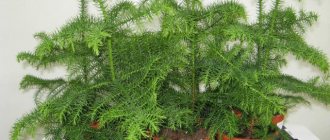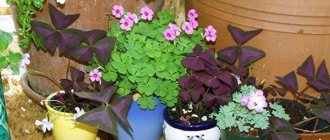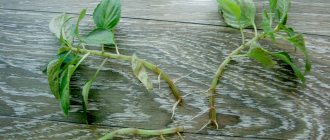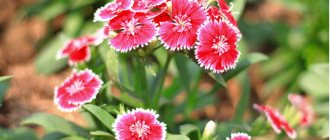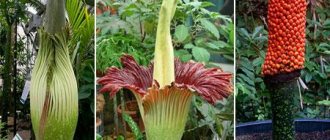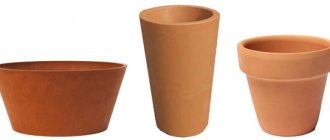Coniferous plants that look like shrubs look good in landscapes. They are unpretentious and have a decorative appearance. They are easy to grow in any climate. For the most part, coniferous shrubs are evergreen and do not lose their beauty in the winter and autumn months. How to properly care for and select such plants for the garden?
Description and general characteristics of coniferous shrubs
They belong to the gymnosperm family; cones with seeds ripen on the bushes. Their trunks quickly become woody and their tubules contain resin. Instead of leaves, coniferous shrubs have needles, so the plants can easily cope with drought or humidity. Because of the needles, shrubs lose less heat and moisture. The needles do not fall off or crumble in winter and autumn. After the life cycle of the needles comes to an end, they are replaced by new needles. This process is constant. Only larch needles fall off with the beginning of autumn.
The roots of this class of plants can be taproots, and sometimes they grow through lateral layering.
With a stem system, the roots of the shrub grow vertically and go into the deep layers of the soil. Lateral branches improve nutrition of plants with nutrients and water. Thanks to this root system, the shrub is more stable in the wind.
Depending on the plant variety, the crop can be monoecious or dioecious. The optimal temperature for coniferous crops will be a warm climate; abundant watering is important for their growth.
Their family is extensive and includes many spruces, thujas, and junipers. Creeping and dwarf ornamental shrubs are usually grown in gardens.
How to use for garden
For gardens and summer cottages, coniferous shrubs can become a real panacea. People who are accustomed to planting fruits and vegetables in their gardens will be able to get rid of most pests and plant diseases with the help of such shrubs. The needles contain many useful substances and minerals; they can be used as fertilizer, both fresh and as a decoction and infusion.
Composition of coniferous shrubs on a personal plot
Use in landscape design
Dwarf coniferous trees and shrubs play an important role in the design of a summer cottage. Properly planted, they can not only give the appearance chic and elegance, but also delimit the garden into zones. If the site is not planned to be used for growing vegetables and fruits, then with the help of coniferous shrubs you can give the dacha an unusually aesthetic appearance, and the child can calmly enjoy a walk in the home forest.
Note! Coniferous shrubs look ideal when decorating a play area and a barbecue area. Framing paths or a decorative pond also fits perfectly into the design of a summer cottage. A gazebo surrounded by coniferous bushes will give you the feeling of a picnic in the forest.
Selection of shrubs
In landscape compositions, spruce and pine trees look quite impressive. Don't be afraid of their large size and bulkiness. For decades they will not grow more than 200 centimeters. Dwarf shrubs do not have branched roots that lie deep.
To create a hedge, it is better to plant the prickly spruce Picea pungens. If the interval between trees is maintained at 100 centimeters, a hedge of green spaces is formed as the plant grows. But it should not be used to decorate New Year's holidays.
To decorate the area, you can use mixborders of shrubs and conifers, planting bushes of different heights.
A gardener can always choose among thousands of varieties of trees and shrubs. In order not to spend too much, you can buy seedlings of ordinary coniferous shrubs, not dwarf ones, and prune them. These plants can be divided into several types: microdwarfs (reach 30 mm), mini-dwarfs (up to 80 mm), dwarfs (from 15 to 20 centimeters).
And there are also taller varieties: semi-dwarf from 25 to 35 centimeters, medium-sized (reach half a meter), full-sized (grow 30 centimeters per year, in ten years they can grow up to three meters).
Dwarf shrubs can be grown in a regular flower pot. In summer, you can put such plants in a flower garden or grow them in alpine hills. Particularly heat-loving conifers must be taken home or into a greenhouse with the arrival of winter.
Types of coniferous shrubs
Decorative shrubs for the garden and cottage
The type of coniferous shrubs can be divided depending on the family and group. Some shrubs will be able to please the eye with greenery all year round, while others, for example, larch trees, will fall off when cold weather sets in. Decorative coniferous shrubs, even in a single version, will decorate the garden. But, in order to find out the features of planting and care, it is necessary to determine what species the plant belongs to. In relation to genera, coniferous shrubs are:
- pine;
- cypress;
- yew
Below is a list of common coniferous plants planted in gardens and summer cottages.
Mountain pine Golden Glow
This is an unpretentious coniferous shrub used to create landscape design in gardens and personal plots. The height of the Golden Glow pine reaches 130 cm, the branches grow up to 180 cm wide. Without pruning, the shrub has an asymmetrical shape. It grows slowly and is undemanding to soil type.
Spruce Maxwelly
A classic coniferous specimen for dacha areas and park areas. It reaches a height of 150 cm, a width of 200 cm. The shape is cone-shaped, the needles are light and green. The variety is frost-resistant and unpretentious for growing on all types of soil. The growth rate is slow and requires pruning to achieve a symmetrical shape.
Juniper Blue Chip
The low-growing perennial belongs to the cypress genus. This is a coniferous plant that creeps along the ground. The height does not exceed 30 cm, the crown diameter is up to 1.5 m. The plant is unpretentious and frost-resistant. There are no special preferences for soil. The crown does not need to be shaped by pruning, however, to make it more luxuriant, it is necessary to pinch out young branches.
Juniper Blue Chip
Cypress Aurora
This is a type of perennial coniferous shrub. The growth rate is slow. It reaches a height of one and a half meters. The shoots are twisted like a fan, the shape is asymmetrical. Prefers sunny sides and is wind resistant. The color of the crown is golden.
Microbiota cross-paired Jacobsen
An unpretentious coniferous dwarf shrub, but prefers shady places, reliably protected from the wind. The needles are bright green, but when the constant temperature drops, they acquire a brown tint. It can reach a height of 60 cm, crown width up to 1.5 m. The branches are arched and bent upward. It tolerates shape adjustments well. Fruits in small cones.
Microbiota Jacobsen
Mountain pine Gnome
Frost-resistant, moisture-loving mountain pine reaches 200 cm in height at maturity. The width of the branches can also reach 2 m in diameter. The sharp, thick needles are a rich green color. It grows very slowly, the annual growth in any direction does not exceed 5 cm. It has a regular cone shape.
Spruce Glauka Globoza
This spruce is drought and frost resistant. The tree can live up to 500 years. The first years after planting it has an asymmetrical shape with a dimly defined trunk. The color of the needles is gray-blue. Cones up to 3 cm, the first time after planting they fall off without waiting for ripening.
This is one of the most popular varieties when decorating alleys. A cottage with such fir trees will look elegant.
Spruce Glauka Globoza
Juniperus chinensis Mint Julep
The coniferous shrub Mint Julep is an unpretentious plant. It reaches a width of 300 cm. It has a pleasant pine-mint smell. The branches grow at an angle of 45° from the ground. Prefers sunlight; in its presence, the growth and development of the bush is accelerated. The crown is wavy, the needles are soft and bright green.
Rashahib's stupid cypress
The coniferous shrub has an average growth rate and reaches 1 m after reaching 5 years of age. The shape is regular pyramidal. The needles are soft, wavy. Young sprouts and shoots are bright yellow, but with age they darken and acquire a green tint. The plant loves sunlight and can withstand cold temperatures down to −30 °C.
Yew Elegantissima
The perennial shrub grows up to 3 m wide and reaches 150 cm in height. It responds well to pruning and loves shaded places. Unpretentious and suitable for any type of soil. In landscape design it is used to create hedges and frame decorative ponds. It does not bear fruit with cones, but produces bright red pericarps.
Perennial coniferous shrubs, the names of which are varied, will help create a unique design of a garden or summer cottage. With proper planting and minimal maintenance, your garden plot will look stylish and elegant for many years.
Basic conditions for coniferous shrubs
Coniferous bushes can overwinter without shelter, but should not be exposed to the wind during the winter months. And also you should not expose them to direct sunlight. They should not be over-watered or over-dried. They grow well in almost any soil except swampy soil.
Coniferous shrubs are recommended to be used to create green walls and hedges, but they are not recommended to be planted near rocky paths or close to houses. At the same time, coniferous plants should not be planted in the shade so that they do not lose their decorative appearance when choosing a plant variety.
You should take into account how much light there is in the planting area, what kind of soil there is, and how well they fit in with other plants in the flowerbed. The climate and type of landscape composition are also important.
Juniper
This shrub is light-loving, but at the same time it is drought-resistant and not picky about the soil. Dense and flexible needle-like leaves can safely withstand medium-sized wooden and plastic decorations, as well as various types of beads, which makes the plant an extremely convenient substitute for a Christmas tree.
Thanks to the large amount of evaporated phytoncides, juniper is able to disinfect the air around it, and its characteristic aroma calms the nervous system and normalizes sleep.
Since ancient times, this shrub has symbolized protection, confidence and initiative. If you plan to take new heights in any areas of your life next year, take a closer look at juniper. Perhaps his presence in the house will create a favorable atmosphere and energize you for new achievements.
How to plant ephedra correctly
For shrubs, select places where the wind does not blow and the sun's rays do not burn them. Gardeners should purchase seedlings from nurseries in your region. Such plants are better adapted to the climate and take root easily.
The shrub should be planted in spring; a drainage layer should be made at the bottom of the hole and the interval between nearby plants should be at least one and a half meters. In this case, the root collar is not buried. Ephedra requires abundant watering at least once every seven days. In winter, it is better to cover the root system.
It is recommended to plant junipers or dwarf pine in sandy soil. High humidity is common for metasequoia or thuja. Yew and microbiota prefer shaded areas.
Before planting a plant, you should understand what height and volume the shrub will reach. Gardeners often sin by planting them too close to each other and this prevents the seedlings from growing. Then the conifers begin to outlive each other from the area, their decorative appearance deteriorates, and this area of the garden becomes too shaded.
When purchasing, you should choose seedlings with a ball of earth; they can be sold in containers. You should not buy shrubs that have open roots, because the plant looks impressive; the lateral shoots have already begun to die off. When such a plant is planted, it dies within two years.
Plants should not be buried deeper than the height that was in the container when the seedling was sold.
Planting should be done in April or May, but this should not be done in the autumn months, because the ephedra does not have time to adapt and take root. Shrubs should not be planted on hot days or in strong winds. In such weather, their roots dry out. It is better to plant the most heat-loving shrubs in a place where there is no strong wind in winter. Otherwise, they may freeze out.
Caring for conifers
Shrubs for the garden are unpretentious, they practically do not get sick. Only dwarf varieties of spruce can become infected with spider mites. Plants are resistant to fungal diseases and various types of rot, but do not like too much watering.
For the most part, plants do not require any special fertilizer for conifers. Top dressing is done in spring with compost. Experienced gardeners warn that you should not feed coniferous shrubs in the autumn, because this procedure will provoke the active growth of young shoots, which will die when the temperature drops. The result will be a loss of decorative value by the coniferous shrub.
Some plants need to be pruned. The frequency and duration of the procedure usually depends on the type of plant. This is best done in the spring months. Do not be alarmed that the plant partially sheds its needles. This is a normal process of needle renewal that occurs constantly. Conifers do not shed their needles in the fall, but change throughout the year.
Thuja
The guest from the southern latitudes is not found in the wild in Russia, which does not prevent it from perfectly adapting to frost as an outdoor ornamental tree, and also from being an indoor plant that is unpretentious to high temperatures. The bright light green thuja needles bring freshness and energy to the interior, but you need to decorate such a Christmas tree very carefully. The soft and delicate branches of a young plant are easily damaged by heavy toys. It is best to use thick colored paper or cardboard for decoration.
The tree perfectly fights viruses and bacteria and cleanses the space of dust and fine dirt, attracting them to itself with the help of static electricity that forms on the flat needles.
Thuja - the tree of life, is a symbol of hardness, perseverance, longevity and immortality.
Main varieties
Dwarf spruce
This plant belongs to the Pine family and is not too demanding to care for. This type of plant is best planted in a sunny place where the soil is light and fertile. The roots of the dwarf spruce are not too deep, so the soil should be such that water easily penetrates into it and does not become compacted.
The dwarf spruce is fed only once, when the shrub is planted, but it should be watered once every seven days. Such a bush cannot be flooded, so you should not select places with a high groundwater level. The maximum height of most varieties of dwarf spruce reaches no more than two meters.
The most common varieties are Konica, Maxwelli, Alberta Globus, Glauka Globoza. In gardens, such plants are often used to create spectacular hedges. They are easy to shape and trim.
Cypress conifers
Such plants love light, but easily adapt to shade. The shrub prefers to grow in light soil. Asia is considered the homeland of cypress trees, so it is difficult for plants to tolerate frost, especially in cold climate zones. They might just freeze out. Cypress trees have a decorative appearance due to the unusual, neat shape of the crown and cones. Such shrubs should be watered frequently during hot weather.
After the fourth year of life, in spring and autumn, shrubs should be fed with mullein and superphosphate. Pruning is carried out in spring.
One of the most interesting varieties is cypress. It has an original creeping appearance, but at the same time it can be formed like a dwarf tree. This shrub prefers diffused light. A variety of cypress with yellow needles, on the contrary, is planted in a place with bright lighting.
If in the winter months the temperature drops below 25 degrees, then such plants are covered for the whole winter. It does not tolerate strong winds, regions with poor ecology and maritime climate. In landscape design, it is often used to design alpine slides and stone gardens. Cypress is used in folk medicine as a natural diuretic.
Microbiota
This plant is similar to juniper, it is unpretentious in care and quite frost-resistant. Microbiota does not require frequent watering on dry and hot days or during drought. They should not be grown in saline soil or particularly wet areas. An adult plant reaches a height of about a meter; the conifer grows for a long time, growing up to two meters wide. During the winter months, its needles turn brown. The microbiota looks impressive in group plantings, for example, in a rock garden among stones.
Decorative junipers
It is mistakenly mistaken for a deciduous plant, but it is a conifer that prefers sunny places. It is frost-resistant. The branches of some species of juniper can grow berries. It is better to plant such a bush together with light, nutritious soil. The most famous decorative varieties of juniper are Cossack juniper and yew berry. These plants are in the Red Book, so they are additionally cultivated outside nurseries.
Yew
It is a shrub that grows slowly and remains evergreen all the time. The period of his life is quite long. On the branches of the yew tree you can see red berries among the needles. Despite their appetizing appearance, they should not be eaten because they are poisonous, like all other plants. Yew forms easily when pruned, so green sculptures and labyrinths are made from it.
Coniferous shrubs are planted both in shaded areas and in direct sunlight. The plant is not afraid of wind. Landscape designers prefer to combine evergreen yew with cereals or feather grass. It looks unusual with decorative flower crops. You can experiment by combining it in one composition with a rose or peony.
Araucaria
This tropical plant is not afraid of room temperature even in winter and is easy to care for, and its external resemblance to the usual spruce makes it an excellent candidate for the role of a New Year's tree. This “Christmas tree” must be protected from bright sun and provided with sufficient air humidity, and then it will grow and delight you for many years.
Araucaria needles are soft and silky, but at the same time quite strong, so you can use any decorations you like without harming the branches.
If you have schoolchildren or students in your home, araucaria will be an excellent study assistant. Considered a symbol of knowledge, spirituality and comprehension of truth, this plant strengthens character, promotes intellectual development and the desire to broaden one's horizons, and also facilitates the assimilation of new information.
How to decorate a garden
There are several techniques you can use to decorate your site:
- Combination with other plants. Conifers are harmonious with large flowers and plants with decorative leaves, for example, rhododendrons. This composition can be changed every season by selecting new plants. It is not recommended to plant birch and bird cherry next to bushes;
- Alpine slides and ponds. In such a composition, it is important to think over the color scheme, taking into account the fact that many plants change shades in the fall. Tall, spreading bushes should be planted in the background, and creeping and low-growing varieties should be planted in front;
- Hedge. Several conifers planted nearby will help to delimit the area into zones or cover an unnecessary area. The best plant shapes for this design: pyramid, ball, column. Dwarf plant species are suitable for creating a living border;
- Accent. To emphasize any zone on the site, you can plant a single coniferous bush or bonsai;
- Group plantings. This type of landscape design should be based on the similarity of shapes, colors, and sizes. When planting, it is important to consider the approximate height and volume of each adult plant.
Currently reading:
- Planting to decorate the site with three types of coniferous trees
- Persistent, large harvest of cucumbers after planting them as seedlings
- Basic technologies for growing and caring for peas
- Effectively getting rid of whiteflies on plants
Share the news on social networks
About the author: Victoria Semyonovna Nakhodkina
Leading researcher at the laboratory of vegetable and berry crops, Yakut Scientific Research Institute of Agriculture, Siberian Branch of the Russian Academy of Agricultural Sciences, Republic of Sakha (Yakutia).
